- Home
- Photography
- Low Angle Photography
Your First Wildlife Photos Will Be Boring Shots Looking Down
And That's Exactly Where Every Wildlife Photographer Starts
I have a hard drive full of photos that prove a disappointing truth about learning wildlife photography.
For years, my pictures from wildlife hides all looked the same. They were sharp enough, but they were boring. They were photos of a bird, but they never felt like photos with a bird.
They were taken from above. Looking down. Always looking down.
Have you ever come home from a walk, looked at your photos, and felt that same sense of disappointment? That nagging feeling that the picture on your screen doesn't capture what your heart felt in that moment. Me too.
Here's what I wish someone had told me then: Those "boring" photos weren't wasted shots. They were my eyes learning to see what didn't work. Every disappointing image was teaching me something about the connection I was missing.
Your boring photos today? They're tomorrow's "aha!" moments waiting to happen.
The problem wasn't my camera or my lens. It was my perspective. Literally. I was a distant observer looking down from another world, and my photos felt distant because I was distant.
The solution would mean getting uncomfortable. It would mean learning to see the world from a completely different level. But first, I had to give myself permission to take a thousand boring shots while I figured it out.
Choosing Discomfort for a Better Photo
My breakthrough didn't happen in my living room watching YouTube tutorials. It happened on a cold, stony beach in Northumberland when I made a choice that changed everything.
Up above the harbor wall in Craster, I spotted Turnstones foraging in a chaotic jumble of stone and seaweed below. From my comfortable standing position, even with a long lens, the birds almost vanished into the background.
I took a picture. It was fine. It was a record of a bird. But it was forgettable.
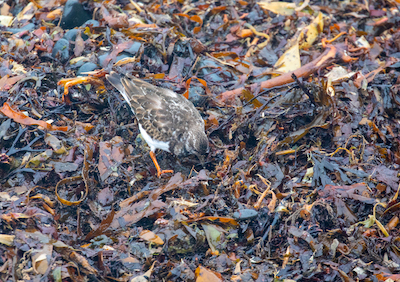 This was my view from the top of the harbour wall. I remember taking the picture and feeling that familiar disappointment. It is a photo of a Turnstone, but the high angle makes it feel like I am in a different world, just observing from above. There is no connection.
This was my view from the top of the harbour wall. I remember taking the picture and feeling that familiar disappointment. It is a photo of a Turnstone, but the high angle makes it feel like I am in a different world, just observing from above. There is no connection.I looked at the flat image on my camera screen and then back at the birds. My brain knew what it had to do, but my legs argued back. I knew I had to leave the convenient wall, head down the steep road, and eventually haul myself back up.
This was my wall moment. It's the choice every wildlife photographer faces. Stay comfortable and get ordinary shots, or choose the harder path for something better.
The desire for a better photo was strong. But it was more than that. I wanted a better *experience*, and I knew I wouldn't find it from up on the wall.
Your Own "Wall Moment" is Waiting
Every wildlife photographer has their own version of my harbor wall. That moment when comfort battles curiosity. Maybe it's:
- Leaving the car park path to get closer to the pond
- Crouching in wet grass instead of standing on the boardwalk
- Getting up at dawn instead of shooting in convenient afternoon light
The magic happens when you choose the harder option. Not because it's harder, but because it puts you where the real shots live.
What's your wall? Where will you choose discomfort over convenience for your next photo?
Learning to Listen: How the Shot Tells You to Go Lower
So I went. As I reached the bottom of the hill and joined the slipway, the movement was too much for the birds. They noticed me and took to the air.
There was no way I was climbing back up straight away, so I sat on the cold stone wall to get my breath back.
Surprisingly, it didn't take long for the birds to settle. From here, I was much closer to their world. Surely this was low enough? I raised my camera and could see it was a huge improvement. I could see the sides of their bodies now, not just their backs.
But looking at the photos, I could see there was still a problem. Even from my seated position, the background was messy. Those stones, though slightly out of focus, made it difficult to see the birds clearly.
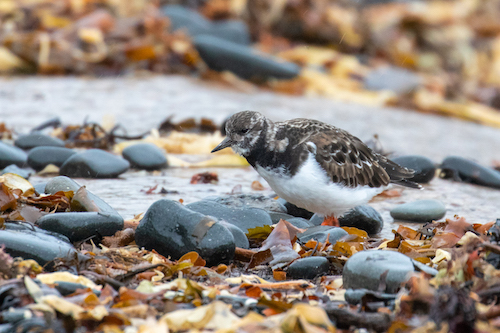 This was an improvement. By sitting down, I was closer to the bird's level. The problem was that the background stones were almost as sharp as the bird itself. My subject was getting lost in all that visual noise. The shot was telling me it needed something more
This was an improvement. By sitting down, I was closer to the bird's level. The problem was that the background stones were almost as sharp as the bird itself. My subject was getting lost in all that visual noise. The shot was telling me it needed something moreMy eyes drifted to the concrete slipway itself, but my mind instantly flooded with excuses. People would wonder what on earth I was doing. They might laugh when I tried to awkwardly get back on two feet.
Learning to Listen to the Shot
This is where I learned something crucial: the shot will tell you what it needs if you pay attention. My seated position was better, but the messy background was screaming for a true low-angle photography approach. It was telling me to go lower.
Instead of fighting that voice or making excuses, I started listening to what was actually required:
- The flip-out screen became my secret weapon for getting even lower
- A simple waterproof sheet solved the lying on wet ground problem
- Patience became more important than perfect positioning
Every uncomfortable adjustment was teaching me something new about what wildlife photography actually demands.
What is Your Shot Trying to Tell You?
Next time you're out with your camera, pause and ask: "What does this shot actually need?" Not what's convenient, not what's comfortable, but what would make this image sing?
Your camera, your subject, and your environment are constantly giving you clues. The magic happens when you start listening to them instead of fighting them.
The Payoff: From Distant Observer to Active Participant
Later that day, I found more Turnstones on the shingle beach. This was my second chance, and this time I knew what the shot needed.
I slowly set my bag on the dry stones, took out my waterproof sheet, and got awkwardly down to the ground. People sit on the beach all the time, I told myself. Here, I didn't feel so out of place.
By lying still, I stopped being a threat and became part of the landscape. Soon enough, one of the Turnstones ignored me completely, walking closer and closer.
The click of the shutter felt quiet and deliberate.
When I looked at the image on the back of my camera, I felt that jolt of satisfaction every wildlife photographer dreams of. The bird was perfectly sharp. More importantly, the messy background had melted away into a soft, out-of-focus wash of color.
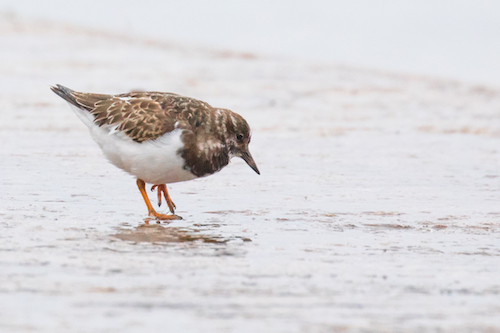 This is the moment it all clicked into place. By getting my lens right down at ground level, the messy shingle beach transformed into this soft, blurry background. The photo finally felt like I was with the bird, sharing its stony world for a moment. This was the feeling I had been searching for.
This is the moment it all clicked into place. By getting my lens right down at ground level, the messy shingle beach transformed into this soft, blurry background. The photo finally felt like I was with the bird, sharing its stony world for a moment. This was the feeling I had been searching for.The photo wasn't just of the bird. It felt like I was with the bird, sharing its stony world. This was the magic of low-angle photography. It was the difference between looking and seeing.
Your "Connection" Moment is Coming
Just to prove to myself that I had finally mastered what felt impossible from that harbor wall, I waited for a Sanderling to move closer. As it zipped across the sand like a clockwork toy, I knew I was ready.
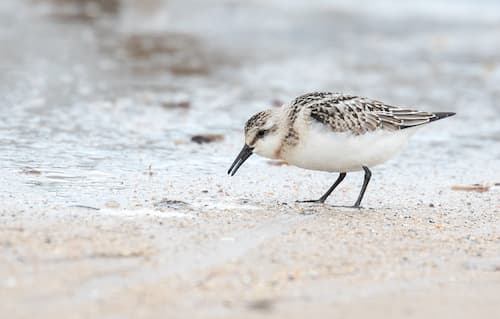 Putting the new lesson into practice. When I saw this Sanderling farther down the beach, I knew exactly what I had to do. Getting low was no longer a debate in my head. It had become part of the process.
Putting the new lesson into practice. When I saw this Sanderling farther down the beach, I knew exactly what I had to do. Getting low was no longer a debate in my head. It had become part of the process.By the time I thought about the struggle of getting back up, I realized everyone else on the beach was far away. Nobody would even see my inelegant movements. But more importantly, I didn't care anymore.
I had found the connection I'd been searching for in all those boring photos on my hard drive.
That same transformation awaits you. From distant observer to welcomed participant. From photos of wildlife to photos with wildlife.
Your uncomfortable beach moment is out there, waiting for you to choose it.
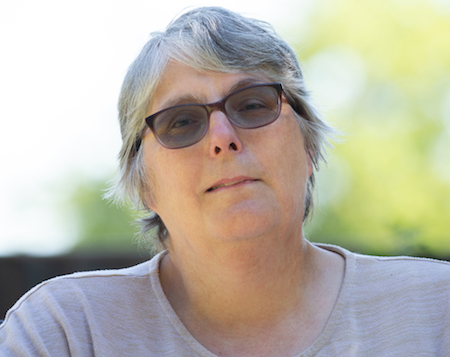
About the Author
For me, it’s never been just about bird names or camera settings, but the thrill of seeing a distant speck turn into a hunting kestrel.
After years of learning how to notice and photograph those moments, my camera has become the tool - and this site the field notebook - where I share what I’ve discovered.
If you’re ready to look a little closer, you’ll find the trips, lessons, and small wins that can help you see and photograph the wildlife right on your doorstep.
Step Behind the Wild Lens
If you’ve enjoyed your time here, you can also follow along by email.
I send the Wild Lens newsletter occasionally. It’s where I share:
- Fresh field notes and recent encounters
- The stories behind favourite photos
- Practical tips that don’t always make it onto the site
You’ll get new UK wildlife guides, photo tips, and ideas for your next walk, straight to your inbox.














